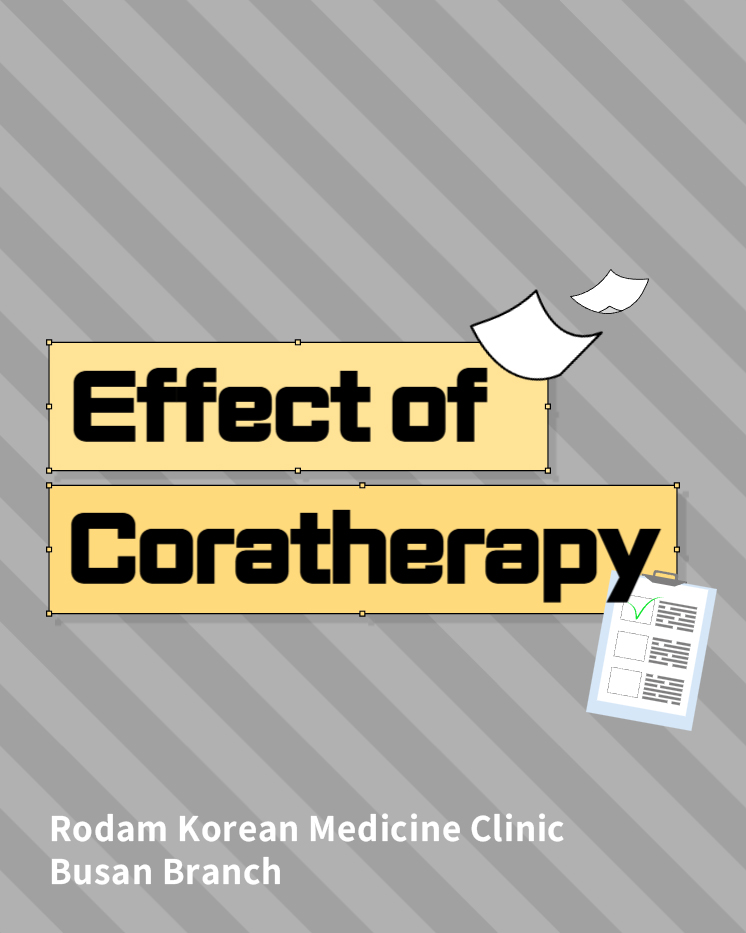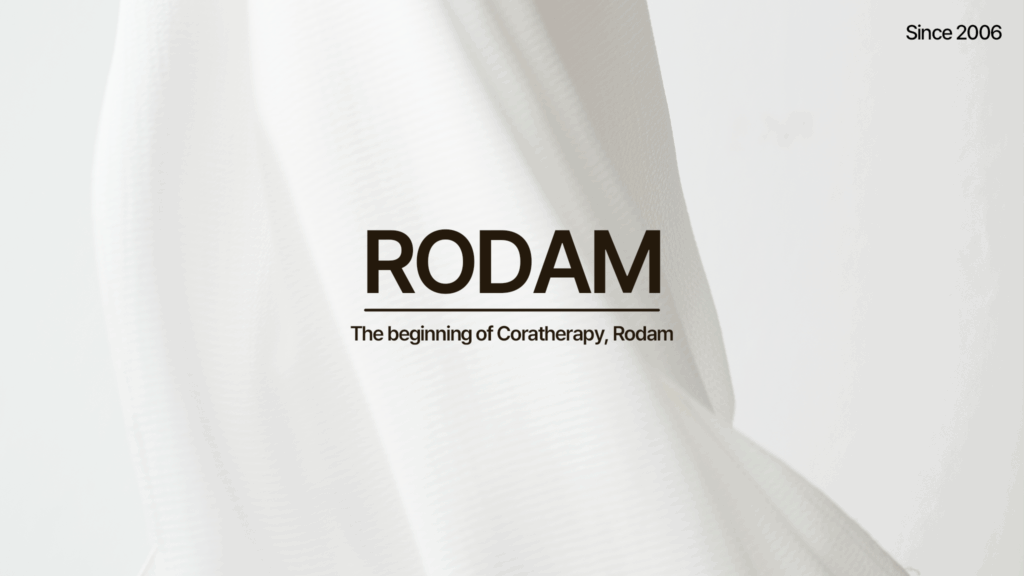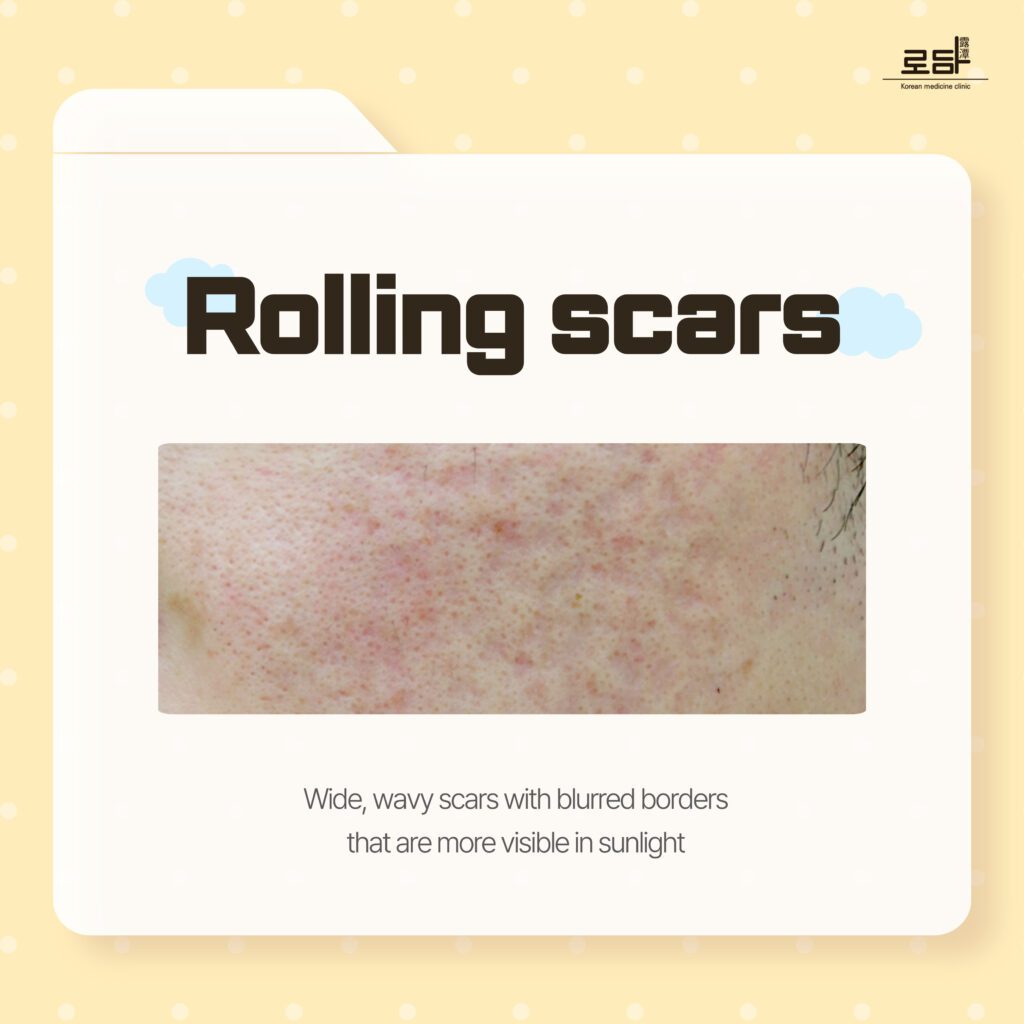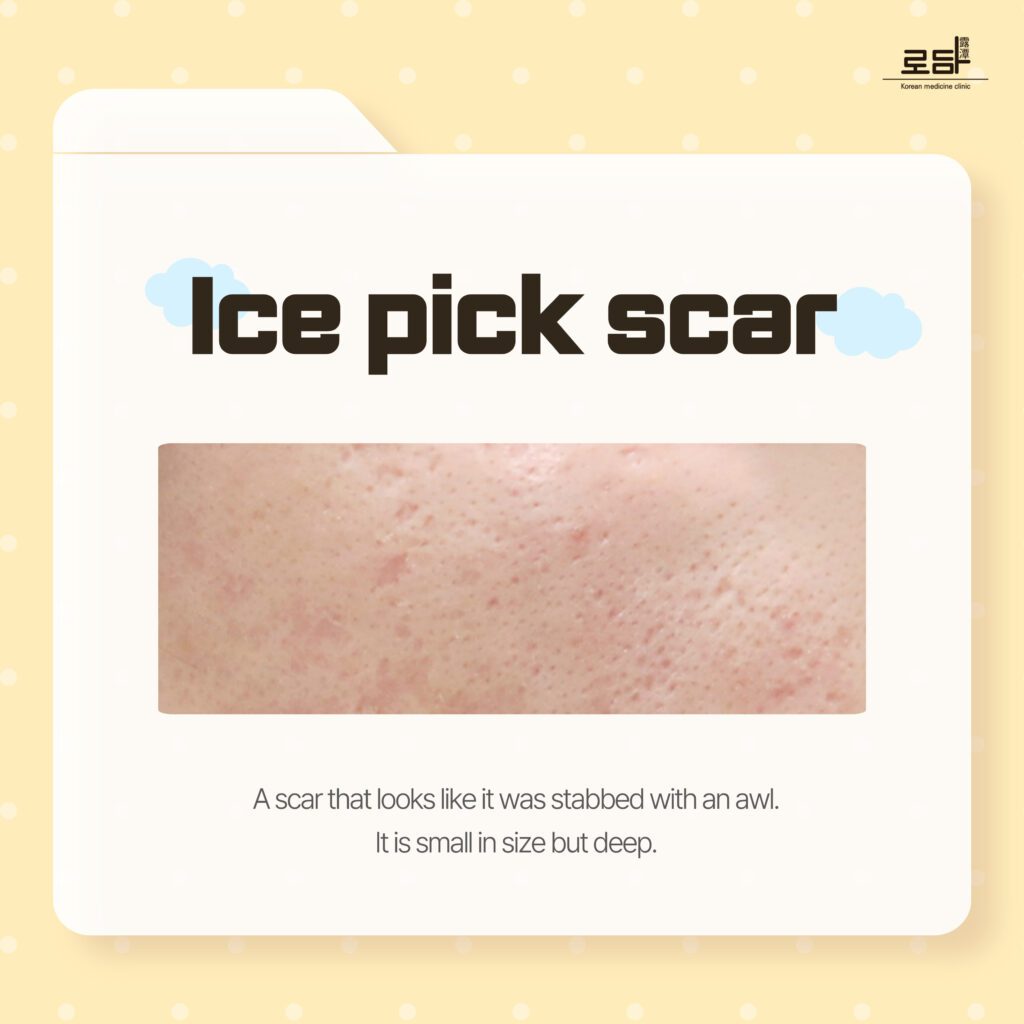
Effect of Coratherapy on Acne Scars by Shape at Rodam Korean Medicine Clinic Busan

Hello, this is Dr. Hyunki Cho from Rodam Korean Medicine Clinic Busan branch, specializing in removing scars.
Acne scars are not just simple indentations on the skin but can appear in various forms, such as looking uneven under lighting even if they seem fine on the surface.
These scars are categorized into types like boxcar, rolling, and ice pick scars, each having distinct characteristics.
Therefore, even if the same treatment method is initiated, it is crucial to consider the type of scar and individual skin characteristics to provide customized procedures.
The same applies when performing Coratherapy treatments.
Today, I would like to talk about the types and characteristics of acne scars and the effects of Coratherapy treatment for achieving more effective results in treating indented acne scars.

Acne Scars: Characteristics by Type and Coratherapy Treatment Effects
1. Boxcar Scars: Deep and Distinct Borders

Boxcar scars are characterized by distinct and sunken edges, resembling a boxcar.
They commonly appear on areas with thicker skin, such as the cheeks or temples, and have flat bottoms.
These scars often result from aggressively squeezing or picking at acne,
and their well-defined borders make them more noticeable.
Coratherapy Treatment Effects
: Boxcar scars are relatively shallow compared to other types of scars, making them more responsive to treatment.
Coratherapy softens the hardened tissue of boxcar scars, promotes skin regeneration, and gradually reduces the appearance of the scars.
2. Rolling Scars: Uneven Skin Texture

Rolling scars have a gently sloping appearance,
unlike boxcar scars, they lack distinct edges and make the skin look uneven.
Although they may not appear severe at first glance,
they can look like surface irregularities depending on the angle of light.
Coratherapy Treatment Effects:
: Rolling scars are larger and lack defined edges, making them more challenging to treat.
Coratherapy focuses on breaking down the adhered tissues in specific areas,
stimulating collagen regeneration, and softening the skin to improve its texture.
3. Ice Pick Scars: Deep, Narrow Scars Resembling Ice Pick Marks

Ice pick scars are small, deep indentations that resemble marks made by an ice pick.
They commonly appear on areas with high sebum production, such as the nose or cheeks.
Due to their narrow width and deep depth, ice pick scars are among the most challenging acne scars to treat.
They require specialized regenerative treatments like Coratherapy rather than general laser or peeling procedures.
Coratherapy Treatment Effects
: Ice pick scars require a meticulous approach due to their depth.
Coratherapy involves inserting needles to the base of the scar to stimulate collagen production,
and targeting the surrounding tissue to aid skin regeneration.
Since the scars fill from the bottom up, it may be difficult to visually notice improvement in the early stages of treatment,
but significant improvement becomes evident as the treatment progresses.

As shown, the treatment methods and effects for acne scars can vary depending on their type.
Therefore, it is important to choose the right treatment method through an accurate diagnosis.
The Coratherapy offered at Rodam Korean Medicine Clinic effectively improves boxcar, rolling, and ice pick scars,
providing satisfying results for many patients.
I hope today’s article serves as a guide to solving your concerns about indented acne scars.
If you need further assistance, please feel free to contact us anytime.
Rodam Korean Medicine Clinic Busan branch is always ready to help you resolve your concerns about indented scars.


